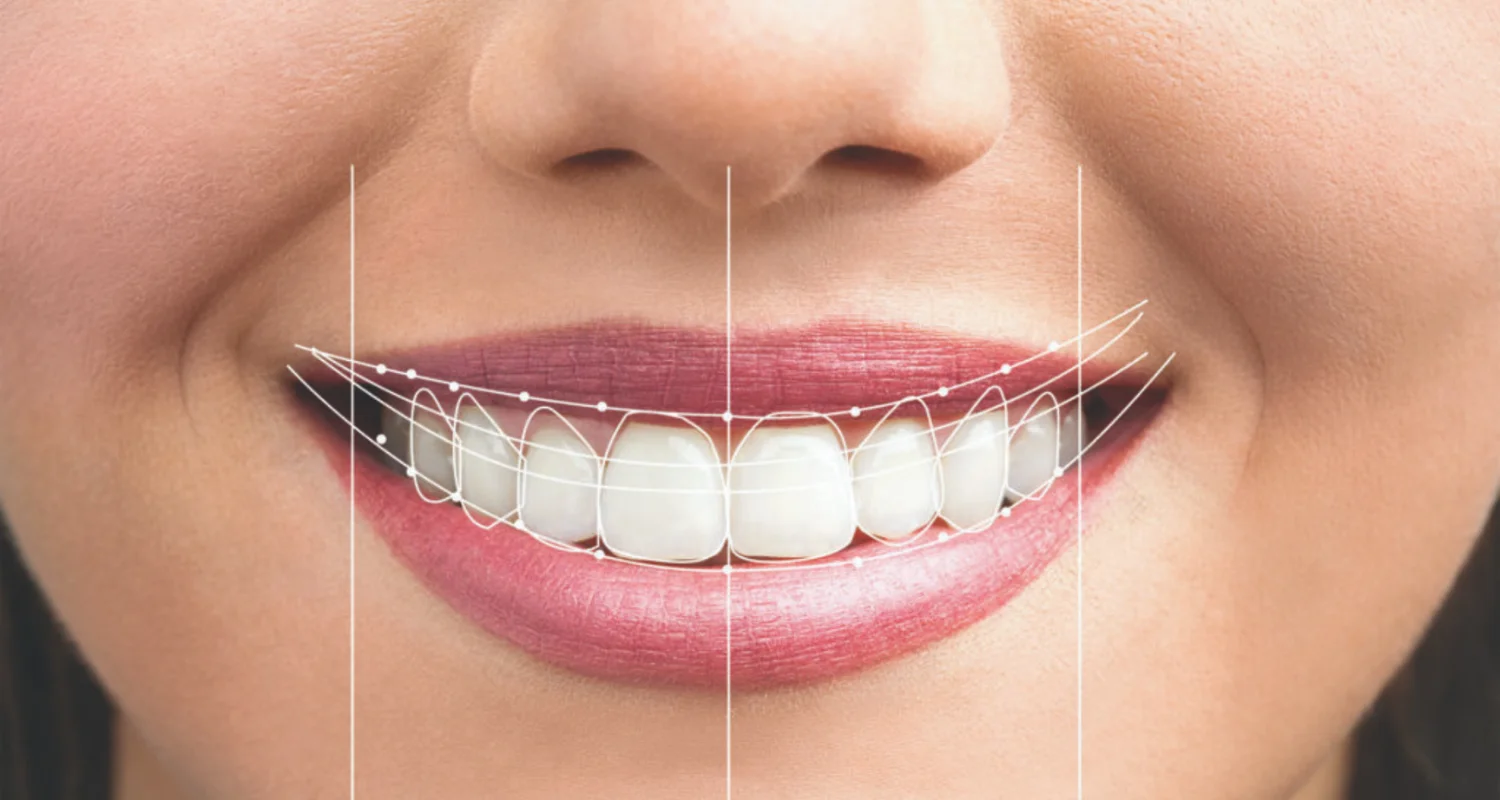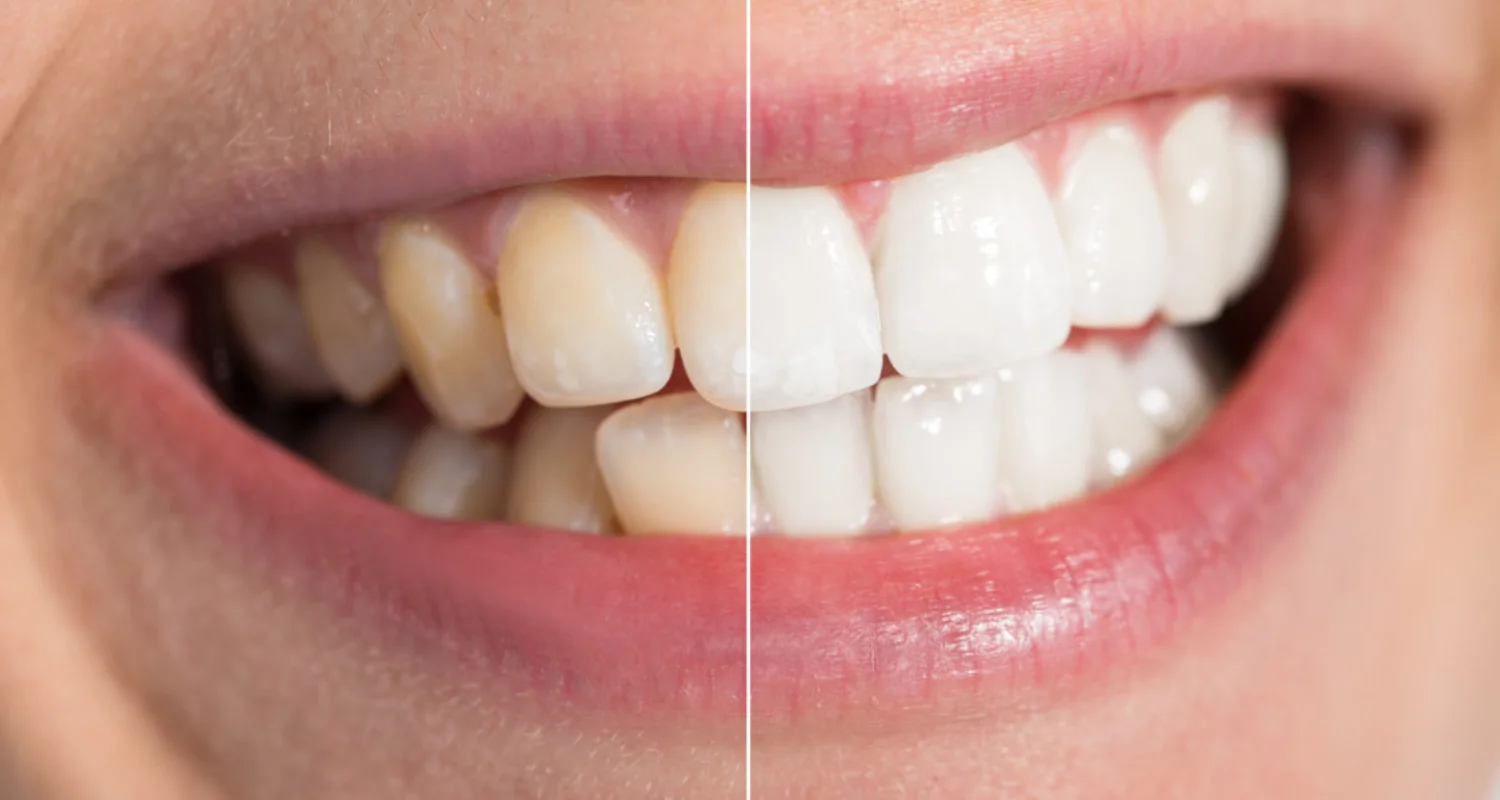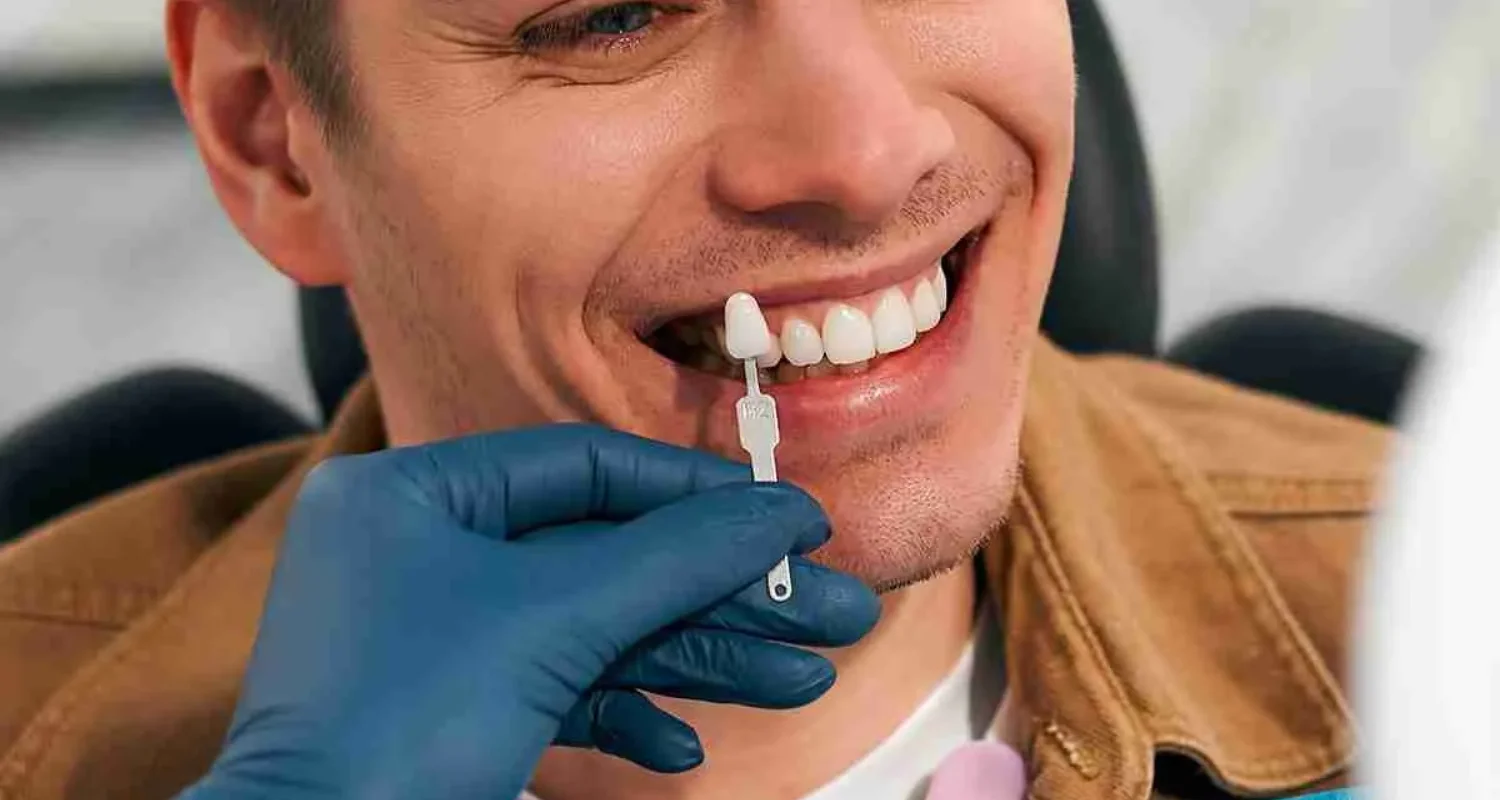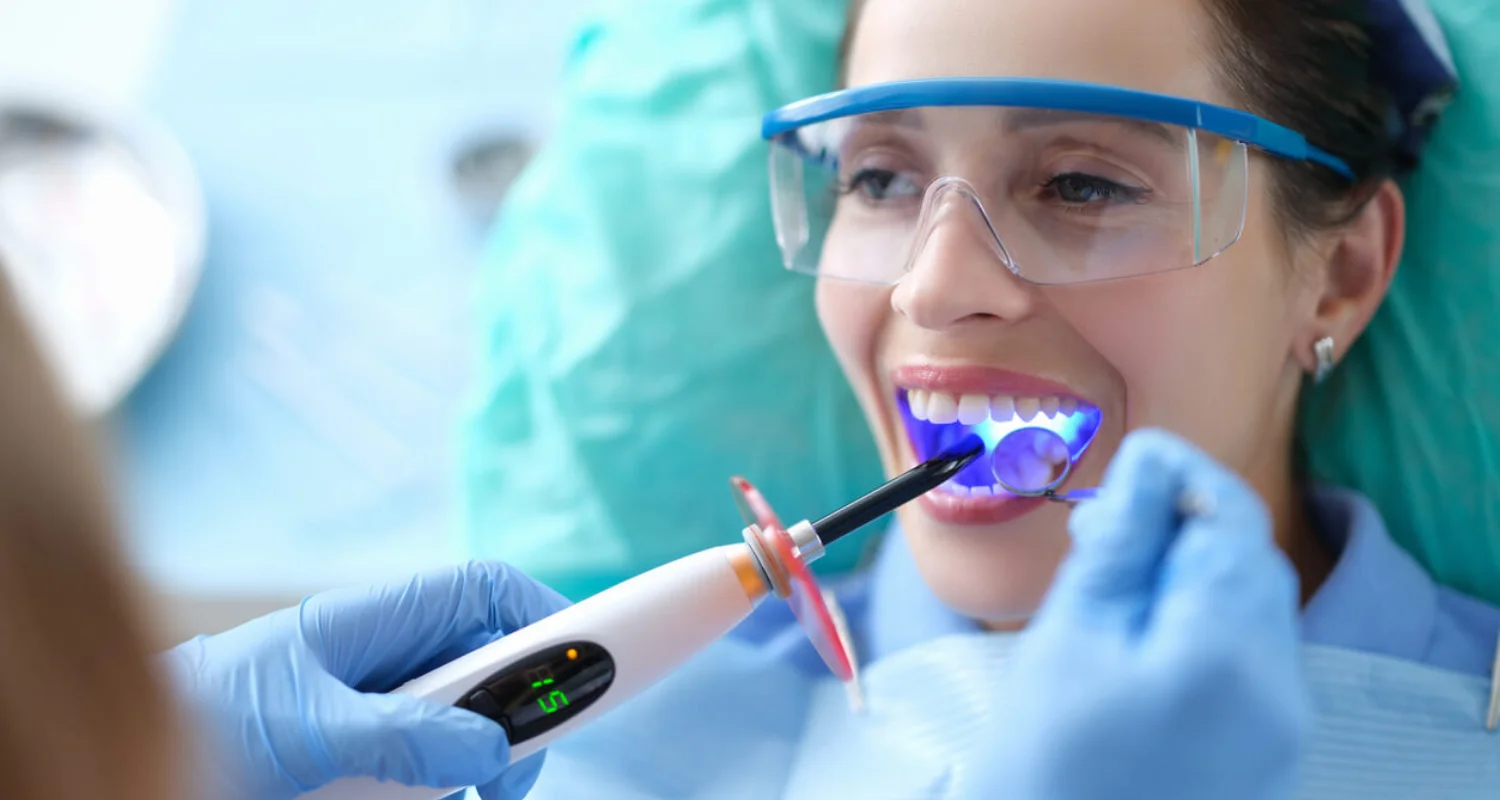Last Updated on: 19th September 2025, 12:37 pm
Are you unhappy with the shape of your teeth? If the answer is yes, it might be the right time to consider a solution called teeth reshaping. Many people struggle with cosmetic dental issues such as misshapen, chipped, cracked, uneven, or asymmetrical teeth. While these concerns are often not health-related, they can significantly dampen one’s confidence.
In fact, millions of individuals feel self-conscious about smiling or being photographed due to the appearance of their teeth. One effective cosmetic solution is reshaping and contouring.
Completely pain-free, teeth reshaping is one of the most conservative cosmetic dental treatments available. In this article, we’ll explore what it is, how it works, its numerous benefits, risks, and what care is like afterward.
What is teeth reshaping?
Teeth reshaping, also known as odontoplasty, dental contouring, or enameloplasty, is a rather inexpensive and simple cosmetic dentistry procedure that can work wonders for improving chipped, uneven, misaligned, or cracked teeth.
This quick and painless procedure simply involves conservatively removing small amounts of enamel in an attempt to reshape or lengthen a particular tooth. In many cases, the dentist will also use a tooth-colored bonding resin to achieve the right shape, hardened onto your tooth.
Interestingly, tooth reshaping can sometimes replace orthodontic treatment; however, this is usually used in slight adjustments for cosmetic purposes, while for other major orthodontic needs, it is not recommended.
Is teeth reshaping the right choice for you?
Wondering if you are the right candidate for dental contouring? Keep reading to learn more! Some of the conditions that are best treated by dental contouring include:
● Small chips or cracks in teeth.
● Pits or bulges in tooth enamel.
● Overly long or pointed teeth that need shortening.
● Minor misalignment of teeth.
● An uneven smile.
However, more serious dental problems cannot be corrected by the use of contouring alone; it may involve other treatments, such as crowns and bridges, orthodontics, veneers, bonding, etc.
Another important concern is your underlying dental health: problems such as cavities, loose teeth, and other conditions may not allow for reshaping of the teeth. Consult an oral health care professional for further help and guidance.
How does tooth reshaping work?
Tooth reshaping and contouring is performed by a dentist in the dental office. Here are the steps involved in the procedure:
1. Initial assessment
The initial procedure of tooth reshaping involves a comprehensive dental checkup. Your dentist will check the health of the teeth and the gums, and whether they are fit to go through the procedure.
Sometimes, X-rays of the structure of the tooth, its roots, and the surrounding bone might be considered to make sure there is no problem, such as decay or weak enamel, which may further complicate the treatment.
2. Planning
After the evaluation, the dentist marks the areas to be reshaped. Proper planning will be done on the amount of enamel to remove and determine the final shape of the tooth. Adjustments will be subtle yet effective in improving the general appearance of the tooth.
3. Reshaping procedure
During the procedure, a few specialized tools help the dentist safely and gently remove small amounts of enamel from the surface of the tooth. This process should be painless as only the outer layer is affected. The dentist will slowly sculpt the tooth to enhance its shape, length, or alignment.
4. Finishing and polishing
After getting the desired shape, smoothing and polishing of the tooth will take place. This will give the tooth a natural, shiny finish that will perfectly blend with the adjacent teeth.
Benefits of Tooth Reshaping
Tooth reshaping is a conservative and inexpensive cosmetic dental treatment that yields spectacular results. While it remains minimally invasive, the results are dramatic, and patient satisfaction is very high.
Key benefits of teeth reshaping include:
● Greatly improves dental alignment.
● In many cases, it may remove the need for further orthodontic correction.
● More cost-effective compared to other dental procedures.
● Painless, safe, and effective solution.
● Conservative treatment.
● Improves overall dental health and aesthetic appeal of your smile and increases self-confidence.
Potential Risks
As with any dental procedure, even with a dentist’s careful approach to the treatment, there are risks associated with tooth reshaping. As the enamel layer is quite thin, excessive removal can create further complications.
Possible risk factors associated with tooth contouring include:
● Temporary sensitivity to hot or cold.
● Higher chances of tooth decay or fracture.
● Yellowing of the teeth.
● Recurrence of problems in patients with bruxism.
Teeth Reshaping Aftercare
Unlike most aesthetic dental procedures, the reshaping of teeth does not require any special recovery measures. Nevertheless, good oral hygiene should be given the greatest emphasis in the following respect:
● Tooth brushing twice a day. Check some great toothbrush here!
● Floss once daily. Here are some of the best for you!
● Schedule dental visits regularly, that is, every six months.
● Don’t smoke.
● Smoothening of teeth: If the teeth feel rough after the procedure, inform your dentist. It may mean plaque or tartar buildup or a possible complication from the procedure.
Costs and Low-Cost Options for Tooth Reshaping
Tooth reshaping is a cost-effective cosmetic dental procedure aimed at improving the appearance of teeth by removing small amounts of enamel. The typical cost for the procedure ranges from $50 to $300 per tooth, depending upon the complexity of the reshaping needed and the dentist’s experience. However, if additional treatments such as dental bonding are required, the cost can increase significantly, potentially exceeding $600 per tooth.
Most dental insurance plans do not cover tooth reshaping as it is considered a cosmetic procedure, which can make it financially challenging for some patients seeking to enhance their smiles. Fortunately, there are several low-cost options available for those interested in the treatment.
Low-Cost Plans for Tooth Reshaping
● Dental schools: Students in dental programs often perform procedures at reduced rates, but they are supervised by licensed professionals. This allows patients to receive quality care at a lower cost.
● Dental payment plans: Many dental offices offer flexible payment options that allow patients to pay for their procedures in installments, making it more manageable financially.
● Clinical trials: Participating in clinical trials for new dental products or techniques can sometimes provide free or low-cost treatment opportunities, and participants may even receive compensation for their time.
These options provide accessible pathways for individuals seeking tooth reshaping without the burden of the high cost associated with traditional cosmetic dentistry.
When Tooth Reshaping Isn’t Enough: Exploring Alternatives
1. Dental bonding: Dental bonding is often recommended for chipped teeth or gaps. It involves reshaping the tooth and applying a tooth-colored resin that hardens and blends with natural teeth. This process typically adds 30 minutes to an hour to the appointment.
2. Dental veneers: Veneers are thin shells made of porcelain or resin that cover the front of teeth to conceal imperfections like discoloration or chips, resulting in a flawless smile.
3. Crowns and bridges: Crowns are caps placed over damaged teeth, while bridges replace missing teeth by anchoring to adjacent ones. Both options provide strong, aesthetic solutions that improve dental function and appearance.
4. Orthodontic treatment: Orthodontics, including braces and clear aligners, correct misaligned teeth and bad bites. These appliances gradually reposition teeth to enhance both smile appearance and overall dental health.
Key takeaway: Tooth reshaping is a conservative cosmetic treatment that can significantly enhance your smile. However, potential risks should be considered, and proper aftercare, including good oral hygiene and regular dental visits, is essential for long-lasting results.
Frequently Asked Questions
Can a dentist shape your teeth?
Yes, a dentist can reshape your teeth through a procedure called dental contouring. This involves removing small amounts of enamel to smooth out imperfections like uneven edges or slight overlaps. It’s a quick and non-invasive cosmetic procedure that can improve both the look and function of your teeth. While contouring can correct minor issues, more significant changes may require treatments like veneers or orthodontics. The reshaping process is usually painless and can be completed in one visit.
Can I get my teeth reshaped before braces?
Typically, it’s best to wait until after braces to reshape your teeth. Braces gradually shift your teeth into place, and reshaping them before orthodontic treatment could interfere with the process. After braces, your dentist can assess whether any contouring is necessary. In some cases, minimal reshaping might be done before braces to address specific concerns, like sharp edges, but it’s not common.
What is the cost of cosmetic teeth contouring?
The cost of cosmetic teeth contouring ranges between $50 and $300 per tooth, depending upon the extent of the reshaping and the dentist’s experience. Since it’s often considered cosmetic, most insurance plans won’t cover it, but if it’s done for functional reasons, partial coverage may apply. Consult your dentist for a personalized estimate based on your needs, as prices vary by location and case complexity.
Is tooth reshaping safe?
Tooth reshaping is a safe, minimally invasive procedure when performed by a skilled dentist. Since only a small amount of enamel is removed, the risk of damage is low. However, because enamel doesn’t regenerate, only a conservative amount should be taken off. Ensure your dentist evaluates your dental health before proceeding, as excessive enamel removal can lead to sensitivity or other issues.
Is the reshaping of teeth painful?
Tooth reshaping is generally not painful since it only involves removing enamel, which doesn’t have nerves. Most people find the procedure painless and don’t need anesthesia. You might experience mild sensitivity afterward, but this typically goes away in a few days. If you experience any discomfort or sensitivity, it’s best to consult your dentist to ensure everything is healing properly.
Share
References
1. Al-Ghanim D, Al-Salat G, Al-Shaikh R. The role of cosmetic dentistry in restoring a youthful appearance in Saudi population: an overview. World J Pharm Res. 2018;7(10):249-258. doi:10.20959/wjpr201810-12312
2. Ergin, Esra & Kutuk, zeynep bilge & Cakir, F & Gurgan, Sevil. (2018). Comparison of two different composite resins used for tooth reshaping and diastema closure in a 4-year follow-up. Nigerian journal of clinical practice. 21. 1098-1106. 10.4103/njcp.njcp_36_18.
3. Higuera, V. (Dec, 2020). The ‘Tooth’ About Teeth Reshaping. Healthline. https://www.healthline.com/health/dental-and-oral-health/teeth-reshaping
4. Gurarie, M. (Feb, 2022). Tooth Contouring and Reshaping Tips. Verywell Health. https://www.verywellhealth.com/teeth-contouring-and-reshaping-5216070
5. Jabeen B. (Aug, 2023) Cosmetic Dentistry: Before and After. WebMd. https://www.webmd.com/oral-health/ss/slideshow-cosmetic-dentistry
-
Nayibe Cubillos M. [Author]
Pharmaceutical Chemestry |Pharmaceutical Process Management | Pharmaceutical Care | Pharmaceutical Services Audit | Pharmaceutical Services Process Consulting | Content Project Manager | SEO Knowledge | Content Writer | Leadership | Scrum Master
View all posts
A healthcare writer with a solid background in pharmaceutical chemistry and a thorough understanding of Colombian regulatory processes and comprehensive sector management, she has significant experience coordinating and leading multidisciplina...






















